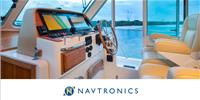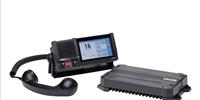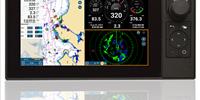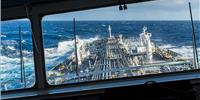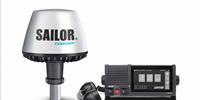Chris Sepp, Vice President of IT at Atlas Corp. (Seaspan), explains how a strategic approach to connectivity, as recommended by Inmarsat, can help shipping companies to realize fleet-wide optimisation, automation and enable remote operations.
Digital technologies are becoming an established feature of modern shipping and are critical to the industry’s future success. Capabilities such as AI-enhanced voyage management and IoT-backed condition-based maintenance can make a significant contribution to the optimization and automation of vessel operations, but their fleet-wide implementation can also be a time-consuming and costly process. If these technologies are to make the required impact, a strategic approach to connectivity is essential, says Inmarsat.
In its recent report, The Network Effect: Strategizing Connectivity at Sea for Maximum Impact, Inmarsat explains that a good connectivity strategy addresses the flow of data and information based on desired use cases and outcomes. As Chris Sepp, Vice President of IT at leading global asset management company Atlas Corp. (Seaspan), puts it: “A modern vessel can harvest 800–900 data points per second if you allow it to.” Even if data is only measured and collected four times per minute, he adds, “that’s a lot of data points per vessel over a 24-hour period.”
Backed by robust connectivity, high-performance data exchange enables shipping companies to treat their ocean-going fleets as remote offices and further integrate them into their business networks. Cloud computing has revolutionized co-working, collaboration and the consolidation of processes across multiple domains; and according to Sepp, there is no reason why, with the right approach, it cannot have the same effect on shipping fleets. “If we can overcome the view that maritime connectivity will always be bandwidth constrained, we can look beyond digital solutions that are not scalable for companies that have 200-plus vessels, like us.”
Shifting mindsets away from the belief that unlimited connectivity at sea is restrictive or prohibitively expensive will open new possibilities for business improvement, Sepp continues: “At Seaspan, we believe in pursuing a strategy where the vessel is no different from a remote office, where you don’t need to tell people how much they should or shouldn’t be using the internet. As a side-effect of that, you end up with the material readiness for the IoT, big data, OT remote systems and all the bells and whistles required for emissions reduction by default.”
In Inmarsat’s view, a connectivity strategy should provide organizations with a detailed plan that considers internal factors, such as business goals and organizational readiness, and external factors, such as the availability of resources and the intended timeline. It should also act as a roadmap to where the business wants to go and guide decision making towards achieving financial, regulatory and organisational growth targets by showing what is possible at each stage.
Sepp agrees with this assessment, adding that a well-formulated connectivity strategy can facilitate enterprise risk management. “Look around most modern vessels and the maritime sector in general, and you will find obsolete equipment everywhere, with computers that have been purchased by an operations department and then left unmanaged for decades,” he says. “These things pose real risks to large businesses, and it is reducing those risks that ensures we continue to invest in improvements in these areas.”
By joining the dots between business goals and connectivity options, operators gain access to a host of benefits including opportunities to optimize and drive efficiency. Sepp points to a study conducted by Seaspan across its fleet in 2021, which concluded that 78% of all data points manually entered into noon reports were available digitally. “Where you have a decent automated manifest system, you can actually systemize that process relatively easily with the right connectivity,” he explains.
In addition, when applied to operational technology and the critical infrastructure network, an effective connectivity framework enables remote services including equipment intervention and surveys. “All of our ships are deployed to generate revenue,” said Sepp. “We don’t have the luxury of having regular physical access to them in drydock, so the majority of shoreside interventions need to be performed remotely.”
Ultimately, in this rapidly changing, highly competitive and increasingly technology-driven era of shipping, buying bandwidth is no longer enough. Shipping companies that succeed in prevailing market conditions will do so by anticipating the challenges and requirements of digital transition and adopting an effective connectivity strategy that supports their ambitions and drives growth in the long term.


